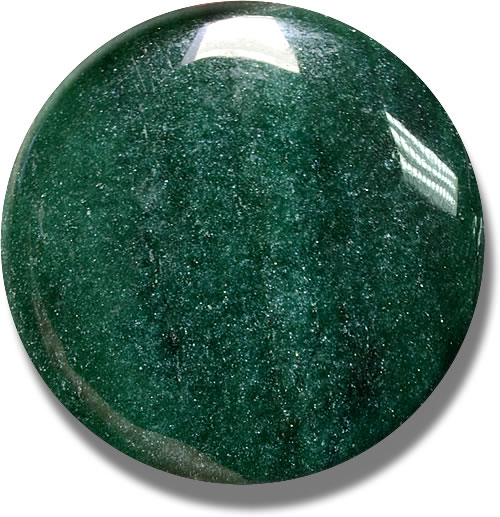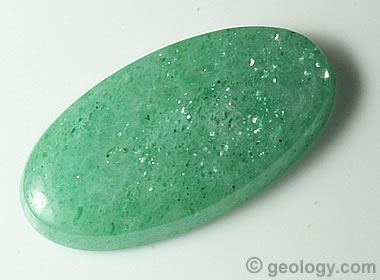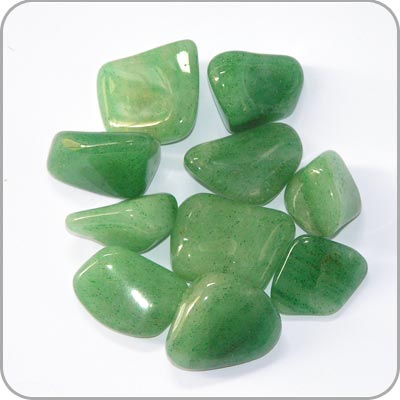Aventurine
Called Aventurine Quartz, Aventurine also, mica quartz or short Aventurine ( aventurine ), is a variety of the mineral quartz with microcrystalline inclusions of Fuchsite, mica or hematite, which cause a strong glint, which is called by this variety as Aventureszenz.
Whether aventurine quartz to the minerals or rocks is counted, it is a question of definition. Traditionally, it is one more likely to be minerals.
Etymology and history
The short name aventurine was originally only for the quartz variety. However, since a similar-looking variety of oligoclase ( feldspar ) was also called Aventurine, this term has become misleading. Therefore, the original mineral is mitgenannt to distinguish.
In Murano, near Venice was at the beginning of the 18th century by accident (Italian: a ventura ) and generates secret, a red-gold shimmering, opaque glass, after the later found, similar-looking quartz variety named. The art product, although softer, but of much more beautiful than the natural prestige, was preferred.
End of the 19th century, Friedrich Wöhler and Max von Pettenkofer developed a method such as the old Venetian can be made with the similar Aventuringlas. The flicker in the colored by iron glass flow accordingly consist of metallic copper, which is dispersed in the molten mass in its crystal planes. The copper is added as copper ( I) oxide in the glass is reduced in the same rate and to metal. The glass is processed into fake jewelry, shirt buttons, bracelets and so on.
Also, by rolling of mica flakes in the glass mass arising masses, which are then blown or molded into objects, also guide the name Aventuringlas.
Green Aventuringlas was first produced in 1865 by the French chemist Pelouze and since then processed in increasing amounts in the French factories for fashion jewelery.
Here, the glass as an essential component is replaced by an addition of chromium ( in the form of potassium dichromate ); when melting occurs chromium oxide, which is glazed with glass and green colors, which has long been known. The special effect but is achieved by introducing more of chromium, can be used as glaze; the excess crystallizes in shining black brown Crystalline and the mass thus receives a very nice reputation. In lacquerware of similar appearance is called Aventurinlack; these are mainly manufactured in Japan.
Color varieties
- Golden - red to brownish- red aventurine quartz - mica or hematite scales; is often associated with Aventurine Feldspar ( Sunstone ) confused
- Green aventurine quartz - Fuchsite trapped - scales
- Blue Aventurine Quartz - trapped crocidolite or rutile fibers
Education and Locations
Aventurine is found in larger masses especially in the Urals, in Germany, however, only at a few sites in Aschaffenburg and Johann George city in Austria with Mariazell and at Belany in India.
Use as a gemstone
Aventurine quartz is almost exclusively used as a gemstone, preferably pearl necklaces, massive bracelets, finger rings, ear rings and drum stones, since this round, highlight cabochon - like shapes the shimmering luster of the stone. But also in the production of smaller and larger works of art such as vases, table tops, cans and other such material was used.
Esoteric
In the esoteric Aventurine quartz is used as a healing stone. He is, among other things against eczema, allergies, bad skin (acne ) and hair loss and help alleviate eye diseases. It also aims to promote the suppleness of mind and give inner peace and serenity. A scientific proof of this there is not.










